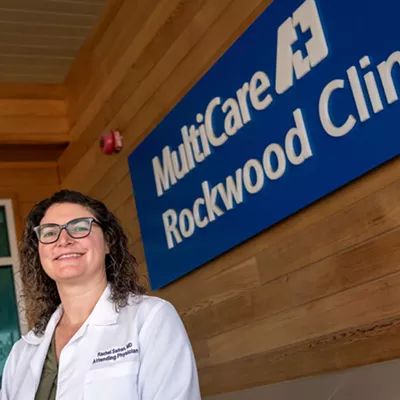Nearly every affliction known to affect wine vines is common among Pinot Noir vineyards. Difficulties plague Pinot Noir at every step -- it is genetically unstable, difficult to ferment, thin-skinned and has difficulties in ripening slowly or too quickly. If the grapes get too little heat, the wines are thin and pale. Too much heat and the wines taste like stewed raisins. Growing Pinot is like dealing with the worst aspects of hormonal teenage behavior.
But when it is made well, there is no other wine that can compare to the rich, silky, velvety texture and earthiness that turns ordinary food into a mouth-popping extravaganza of flavor. The aromas can be intense, with strong cherry, strawberry and plum in the mouth. It can range from light and fruity, to rich and earthy to complex and silky.
The French have made Pinot Noir for hundreds of years in the Burgundy region, which is the French term for the grape. For many, the Pinot Noir grown and produced in France is the standard to which all others are compared. In the United States, California and Oregon have produced some terrific Pinot Noir. Oregon even hosts the International Pinot Noir Celebration in McMinnville yearly, providing the opportunity for participants to taste Pinot Noir from around the world, side-by-side.
Washington state has played with the grape in very small doses and really has not had a region to point at like Oregon's Willamette Valley and declare it a Pinot Noir site. But the Lake Chelan region wants to be that place, and a handful of wineries are producing Washington state Pinot Noir. The state also has a smattering of vineyards near the Columbia River Gorge producing small amounts of Pinot Noir.
The only producer of the grape in the Spokane region is Mountain Dome Winery, a sparkling wine producer. Pinot Noir is the main grape for sparkling wine, and winemaker Michael Manz is a big Pinot Noir fan.
"If I was pushed, and asked what wine I would take with me on a desert island, it would be Pinot Noir," Manz says. "Despite the fact that it can be a royal pain to make, it is a challenge, and that appeals to me."
Manz made a Pinot Noir in 2001 and will make it again when he feels he can source good fruit from Washington. The wine is available in the Spokane market. In a blind tasting of eight Washington Pinot Noir wines, the 2001 Mountain Dome Pinot was one of the top picks of the tasting panel. The wine (retailing for about $17) is made in a Burgundian style with grapes sourced from the White Salmon area near the Oregon and Washington border.
Syncline Cellars produces a Pinot Noir from Celilo Vineyards, again in the southeastern part of the state. However, the wine sells out within a short few months after the release -- the 2003 vintage can still be found in some stores, but the winery is sold out. Winemaker James Mantone produced Pinot Noir in Oregon, and when he moved to Washington, he looked for a good vineyard site with Pinot Noir.
"For me, Pinot Noir is like the purest of all grapes," Mantone says. "It is elusive, but every vintage can teach you so much about how to make the other varietals. You know you've done well if you can make a memorable Pinot Noir."
For people used to drinking the bigger Cabernet Sauvignon or Syrah, Montone says a Pinot Noir may be a little subtle, but the wine will show consumers that "power is not everything in a wine -- elegance and finesse is what you strive for."
Robert Goodfriend, winemaker for Harlequin Winery in Walla Walla, is a former chef who makes Pinot Noir from Oregon grapes, and who makes Pinot Noir from Washington grapes (when he can get them) under the Talcott label. The grapes come from the Evergreen Vineyard near the Oregon border.
"I was a professional chef for 16 years and discovered that Pinot Noir is the most food-friendly wine you can serve," Goodfriend says. "Of course, it is the most difficult to make. But when you have a party of four at dinner, and someone wants fish, someone wants lamb, someone wants pasta and the last person wants vegetarian, the only wine that will work is a Pinot Noir."
While pockets of Pinot Noir are grown in tiny amounts around the state, the North Cascades Winery Association is hoping the Chelan region will produce the most Pinot Noir in Washington.
Steve Kludt, winemaker for Lake Chelan Winery, grew crops for 25 years, mostly apples. In 1998, he planted grapes with a partner, who had previously made Pinot Noir in Oregon. At the time, Kludt thought his vineyard site on the north side of Lake Chelan was just a little hotter than the Willamette Valley in Oregon.
"We discovered that the site where we planted Pinot Noir was not only much hotter, it was consistently hotter than the Willamette Valley every year," says Kludt. "We are still learning, but there are some very good sites for Pinot Noir -- but they are mostly on the south side of Lake Chelan."
Kludt is moving his Pinot Noir vines to the cooler sites on his property. The grape needs warm days and cool nights and often an extended growing period free from frost.
Wineries making Pinot Noir in the Chelan region include Benson Vineyards, Chateau Faire Le Pont, Chelan Estates, Lake Chelan Winery, Gold Diggers Winery, White Heron Cellars and Tildio Winery. A new winery, Nefarious, will be opening later this year and plans to produce Pinot Noir. The offerings are young but work well with food.
Winemakers throughout the state are watching the region to see how well the grape survives. Ron Yabut, winemaker for Austin Robaire in Woodinville, says that if Eastern Washington can consistently grow Pinot Noir in certain regions, he will be very interested in producing that varietal again. The winery made a Pinot Noir from Washington grapes in 2001, but Yabut says he has passed on the grape in the past few years.
In a recent blind tasting, it was difficult not to compare the Washington Pinot Noir to its Oregon counterpart.
"Will we make a Pinot Noir like Oregon? The answer is no," says Manz, noting that consumers will make comparisons between the two states anyway. "We are just beginning in this state. The French have made the wine for centuries -- is it fair to judge Northwest Pinot Noir against the French? No. Will it happen? Yes."
For winemakers who consider Pinot Noir the ultimate grape to conquer, the news of a good, consistent growing site in Washington for Pinot Noir is exciting. For consumers, the wait could be worth it. That contentious teenager could turn out to be the love of your life.














